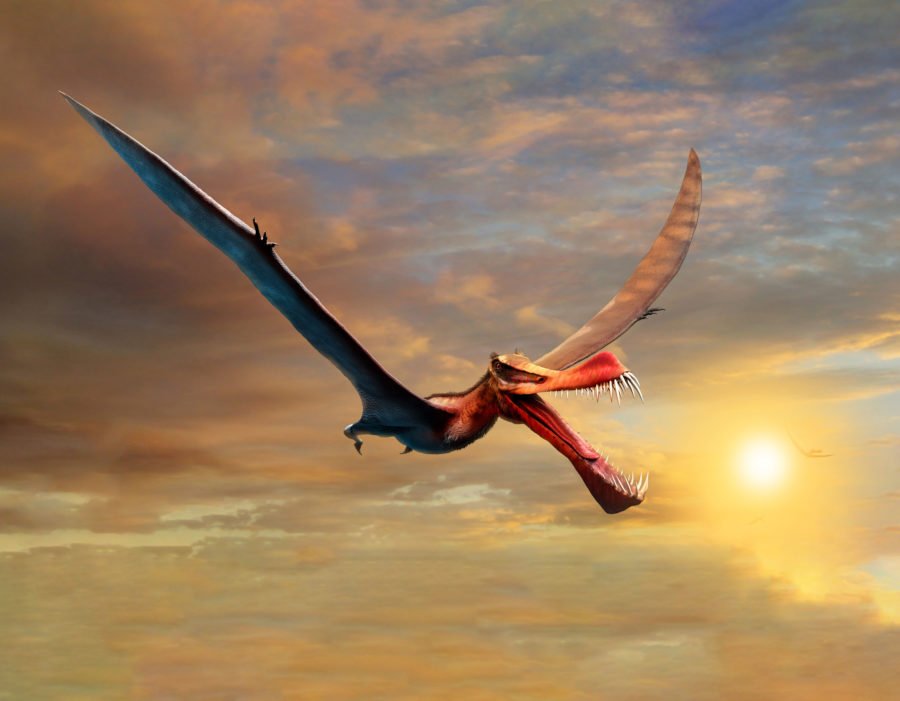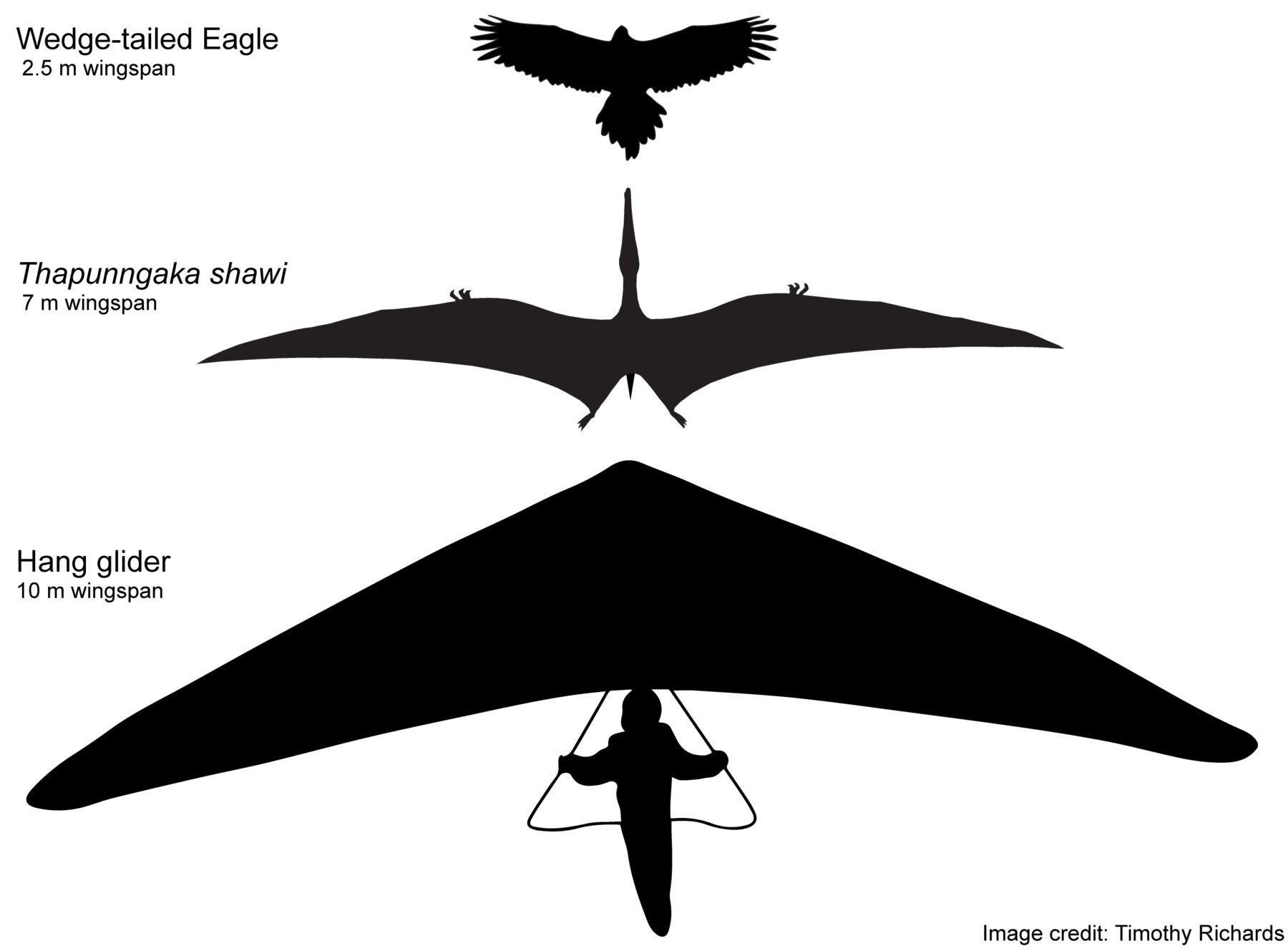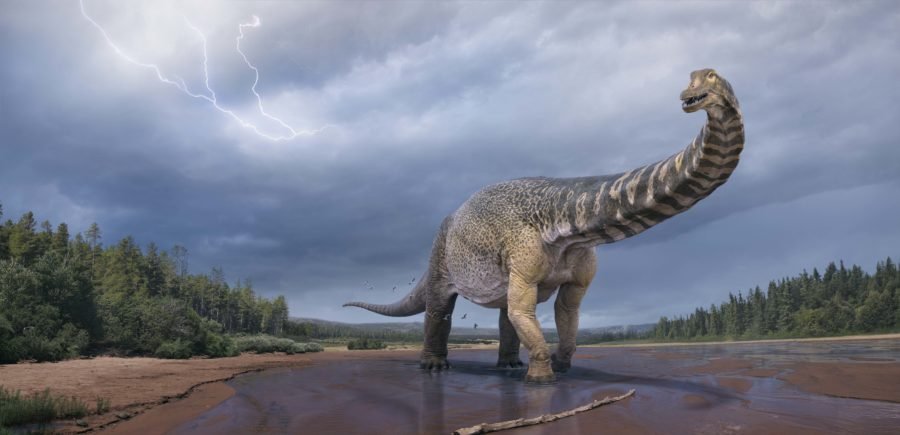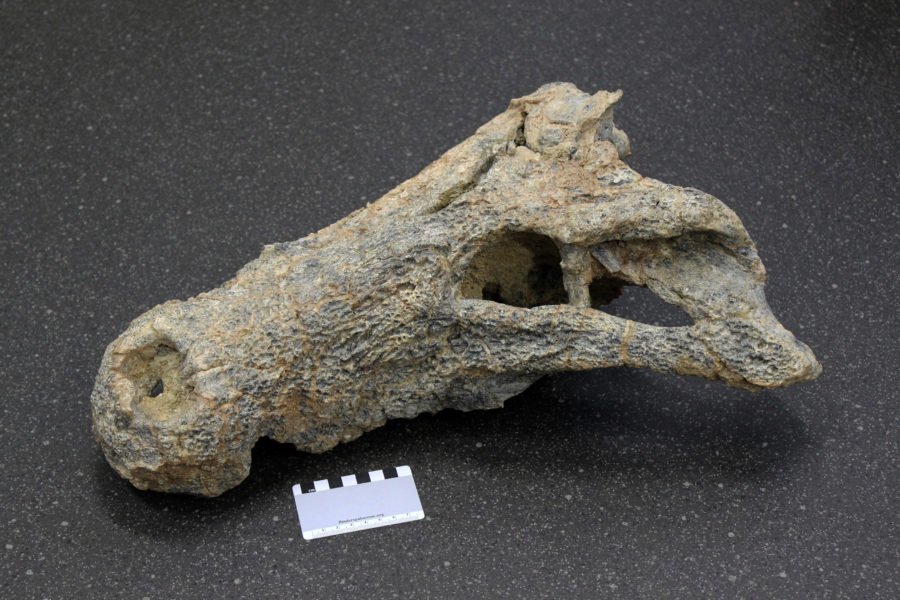‘Closest thing we have to a real life dragon’: Australia’s largest flying reptile discovered

Meet Thapunngaka shawi, the largest flying reptile ever discovered in Australia, with a wingspan of 7m and a mouth full of up to 40 sharp teeth.
A jawbone belonging to the pterosaur was discovered on Wanamara Country, near Richmond in northwest Queensland and was analysed by a team of scientists at the University of Queensland’s Dinosaur Lab.
This new species belongs to a group of pterosaurs known as ‘anhanguerians’, which were common throughout the world during the age of dinosaurs between 245 and 66 million years ago. However, Australia is home to only three species, all of which can be found in western Queensland.
That pterosaurs have thin-walled and relatively hollow bones makes fossils rare. This means the Thapunngaka shawi fossil will significantly contribute to better understanding pterosaurs in Australia.
Thapunngaka shawi could be seen soaring through the sky above the now extinct Eromanga Sea preying on fish.
“It’s the closest thing we have to a real-life dragon,” says Tim Richards, University of Queensland PhD candidate and the lead author of the paper describing the new species, which was published today in the Journal of Vertebrate Paleontology.
“The new pterosaur… would have been a fearsome beast, with a spear-like mouth and a wingspan around 7m. It was essentially just a skull with a long neck, bolted on a pair of long wings.
“This thing would have been quite savage. It would have cast a great shadow over some quivering little dinosaur that wouldn’t have heard it until it was too late.”
Of particular interest to scientists is the enormous size of the pterosaur’s bony crest of the lower jaw.
“These crests probably played a role in the flight dynamics of these creatures, and hopefully future research will deliver more definitive answers,” says Dr Steve Salisbury, co-author on the paper.

Why Thapunngaka shawi you ask? ‘Thapunngaka’ honours the people of the Wanamara Nation, the traditional custodians of the land where the fossil was found, while ‘shawi’ honours the fossil’s discoverer.
“The genus name, Thapunngaka, incorporates thapun [ta-boon] and ngaka [nga-ga], the Wanamara words for ‘spear’ and ‘mouth’, respectively,” says Steve.
“The species name, shawi, honours the fossil’s discoverer Len Shaw, so the name means ‘Shaw’s spear mouth’.”
The fossil of Thapunngaka shawi is on display at Kronosaurus Korner in Richmond.



